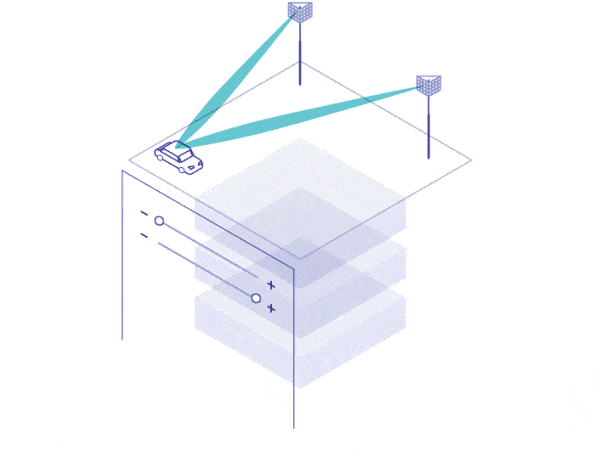
Handover Testing Made Simple
Handover between sites is perhaps the main feature of mobile phone networks. These occur when a mobile phone seamlessly switches its network connection from one site to another as a phone moves. As users, we take it for granted that this just works, but we have all experienced cases when handovers fail -- dropped calls.
When the phone is idle as you are walking or driving down the highway, you aren’t going to notice if the handover doesn’t happen perfectly. Your phone can lose connection briefly and then find a new site to connect to without you ever knowing. That text message would arrive a few seconds late, or you might get it twice. If you happened to get a call at the exact moment your phone lost connection, it would go directly to voicemail.

Handovers make mobile networks... work
However, if you are in the middle of a call, watching a video or gaming, any failed handover would be immediately noticeable. At best, there would be garbled audio or an audio gap, and video streaming or gaming sessions would freeze or lag. At worst, the calls or sessions would simply drop. Therefore, to ensure a good customer experience, handovers must be seamless.
This is difficult at the best of times but becomes very challenging in a lot of real-world scenarios: when the phone is in your pocket or purse and the signal is weak, when your car is driving at 120 km/h and passing cell sites every few seconds, or when the site you handover to is full of other users and can’t support your call.
For these reasons, mobile phone operators focus a lot on making handovers work well. Each operator performs a lot of testing in their lab before launching any new phone or new service. And since each network is unique in terms of how it is designed and configured, each operator has their own custom test scenarios.
Manually testing handover scenarios in a lab environment can be very difficult. To simulate a handover, testers must precisely control RF signal strengths from two or more sites simultaneously. This is typically done using variable attenuators. Attenuating or reducing the strength of one signal simulates moving away from that site, while increasing the strength of another signal simulates moving towards a site. Changing signal strengths more quickly simulates moving faster between sites.
Testing handovers requires a lot of hands...
However, it is not quite that simple in practise. Mobile phone sites use many different RF signals to deliver service to phones. Techniques such as Multiple Input Multiple Output (MIMO) and Carrier Aggregation (CA) combine multiple RF signals together to improve network performance (coverage and throughput), but they mean that testers must manipulate many different signals simultaneously to properly simulate a single handover. This is difficult to do by hand and even harder to repeat.

...Or automation tools
Many testers address this issue by creating their own software to control the variable attenuators. While this is a solution, it usually results in relatively unsophisticated software that is limited to performing only very simple tests. It also takes time and effort to develop and maintain the software.
Fortunately, there are off-the-shelf solutions for RF signal distribution and attenuation control. One of these is LAMTA from Acentury. Handover testing is simple to automate using LAMTA.
Using LAMTA’s Advanced Mobility feature, a tester can pre-configure various handover scenarios for complex RF conditions involving multiple sites each using MIMO and CA. The tests can be set up to run many times without human intervention, so test conditions are perfectly repeatable, and results are consistent.
For more information, click here.
To learn more about our LAMTA product, click here
Contact us if you have any further questions by reaching out to us here
Related Articles
The Current State of RAN Testing and Deployment Practices
How to Use Software Control to Automate RAN Testing for Advanced Mobility Scenarios and Log Analysis
Part 2: How CI/CD methodologies can be applied to 5G RAN Testing and Deployment
Have a question or comment?
We'd love to hear it. Fill out our General Inquiry Form or reach us directly at: info@acentury.co
CONTACT US